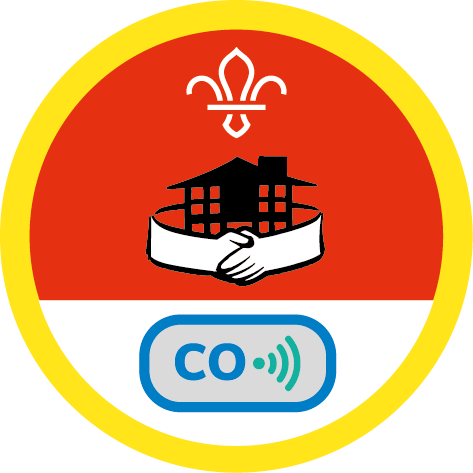Who you gonna call?
You’ll need
- Chalk
Instructions
This game requires drawing on the floor with chalk so it’s best played outside.
1) Divide into groups of three (or two if this is not possible).
2) In front of each team, write out numbers to create a giant phone.
3) There are four numbers. Explain the number and the circumstances they are used for:
- 999 – the main emergency number for the police, ambulance, fire service, coastguard and different rescue services in the UK. Use this when you need an urgent response. Calls to 999 are always free and can be dialled from a mobile phone without needing to unlock it.
- 112 – the international emergency number. If you are not in the UK, dial this number from a mobile phone and it will connect you to the emergency services for the country you are in. Calls to 112 are always free.
- 101 – a non-emergency number for the police. Use this number if you need to call the police to report something, but are not currently in danger or witnessing a crime.
- 111 – a non-emergency medical number. Use this number when you need medical advice but it is not an emergency. If they think you do need additional help, they will put you through to 999. Calls to 111 are always free.
4) Read out a statement describing a scenario.
5) When you say ‘Go!’, they need to dial this number by standing by or putting their hand on the numbers in the correct order. As they do this, they should say the number out loud.
6) After each round, discuss what the correct answer is and explain why, or ask a team that got the answer correct to explain to the group why it was that number.
7) Continue reading the statements until you have gone through them all.
8) End by asking the group when is it OK to dial…
- an emergency number?
- when you need an urgent response
- when you or someone else is in danger
- when you or someone has a serious injury
- when you need to be rescued from a mountain, cave, cliff or the sea
- a non-emergency number?
- when you need advice from the police or a medical professional
- when you are not currently in danger
- when you need to report a crime that has already happened
9) Ask everyone how they would be able to make an emergency call. What could they do if they don’t have a mobile phone?
- use a landline
- ask someone else to call (for example, ask a passer-by, neighbour, teacher, or someone in a nearby shop)
- use someone else’s mobile (you can call 999 without needing to unlock the phone)
- use a public phone box
10) Ask them to think about what kind of information they would need to give to an operator if they dialled an emergency number:
- what the emergency is
- their location
- their name
- the names and ages of the people needing help
11) Remind everyone that 999 calls are always free – whether they use a mobile, landline or public phone. Do any of them know where the nearest public phone box to their home is? Ask participants to look out for phone boxes on their way home from the meeting place or on their way to school, then recap at the next session.
Reflection
It’s important to be responsible when using emergency numbers.
Why is it bad to call an emergency number when you know it’s not an emergency? (It wastes time that the operator could be spending helping someone with a real emergency)
Let the participants know that they will not get into trouble if they call an emergency number and it turns out it wasn't an emergency, as you only get in trouble if you know it isn’t an emergency and still call 999.
Safety
All activities must be safely managed. You must complete a thorough risk assessment and take appropriate steps to reduce risk. Use the safety checklist to help you plan and risk assess your activity. Always get approval for the activity, and have suitable supervision and an InTouch process.
Add other emergency and useful numbers such as local numbers or:
National Grid: 105 (for reporting power cuts)
National Gas Emergency Service: 0800 111 999 (to report a gas leak, damaged gas pipes or if you smell gas).
If it’s not safe to jump:
- Do this activity on a table or stick the numbers on the wall so players can use their hands to touch the numbers instead of jumping.
- Players can use sticks or crutches to tap the numbers on the floor instead of jumping.
For participants with sight impairments
- You can do this activity using Braille numbers or audio numbers.
All Scout activities should be inclusive and accessible.
Do role-play scenarios of an emergency call. Have one person as the operator and one as the caller.
